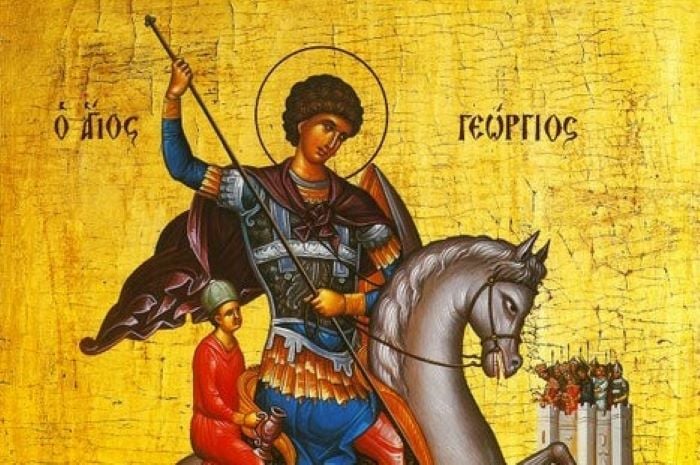
George is one of the most popular names in Greece and Saint George is one of the most beloved saints throughout the Christian world. Almost all Greek households have someone called Georgios or Georgia among close or distant relatives or friends.
In Greece, Saint George Day, or Agios Georgios Day, is celebrated on April 23. However, if Easter is after April 23, then it is celebrated on Easter Monday. Why is that, though?
When celebrations coincide within Great Lent or Holy Week, for example, the feast of St. George or St. Mark (Agios Markos), they are transferred for the week after Easter Sunday.
The reason is simple: Holy Week and Lent are periods of mourning. During Holy Week the Greek Orthodox Church mourns the Passion of Christ, so it is no time for celebration.
In hagiography, Saint George is one of the most venerated saints in the Catholic Church, Anglican, Orthodox, East Syrian, and Miaphysite Churches.
He is immortalized in the myth of Saint George and the Dragon and is one of the Fourteen Holy Helpers.
Saint George was the son of a rich and aristocratic family in Cappadocia, Asia Minor. His parents decided to name him Georgios, a Greek name that means “worker of the land.”
He was an officer for the Roman army. George lived from the end of the 3rd century through the beginning of the 4th century, during emperor Diocletian’s reign.
His memory is celebrated twice a year: on April 23 the Church commemorates his decapitation, however if the date falls before Holy Saturday, then it is postponed to the first Monday after Easter, while on November 3, the Church commemorated the consecration of a cathedral dedicated to him, where his relics were transferred.
The Saint and the dragon
Saint George is very much honored by the Eastern Orthodox Church, wherein he is referred to as a “Great Martyr.”
The traditional legends have offered a historicized narration of George’s encounter with a dragon.
According to tradition, the dragon was guarding a spring in Libya and it wouldn’t let the residents take any water if they didn’t first sacrifice one of their compatriots. The victim was chosen by drawing lots. One day, this happened to be the princess.
The monarch begged for her life to be spared but to no avail. She was offered to the dragon, but then Saint George appeared and faced the dragon, protecting himself with the sign of the Cross. He slayed the dragon and rescued the princess. The citizens abandoned their ancestral paganism and converted to Christianity.
Saint George is the patron saint of the Greek army since during his life he used to work as a military officer. Furthermore, he is also the patron saint of England.
Saint George’s Day celebrated in Style at Arachova
In the town of Arachova, central Greece, where Saint George is the patron saint a a local festival or paniyiri which has its roots in Byzantine times takes place every year.
Men and women dress in traditional clothes, they sing and dance and they also repeat the Easter tradition of roasting lambs on the streets of Arachova.
A procession carrying the saint’s icon parades around the village and winds uphill to the church. Villagers dressed in colorful traditional clothing follow the icon procession while dancing troupes entertain the crowd.